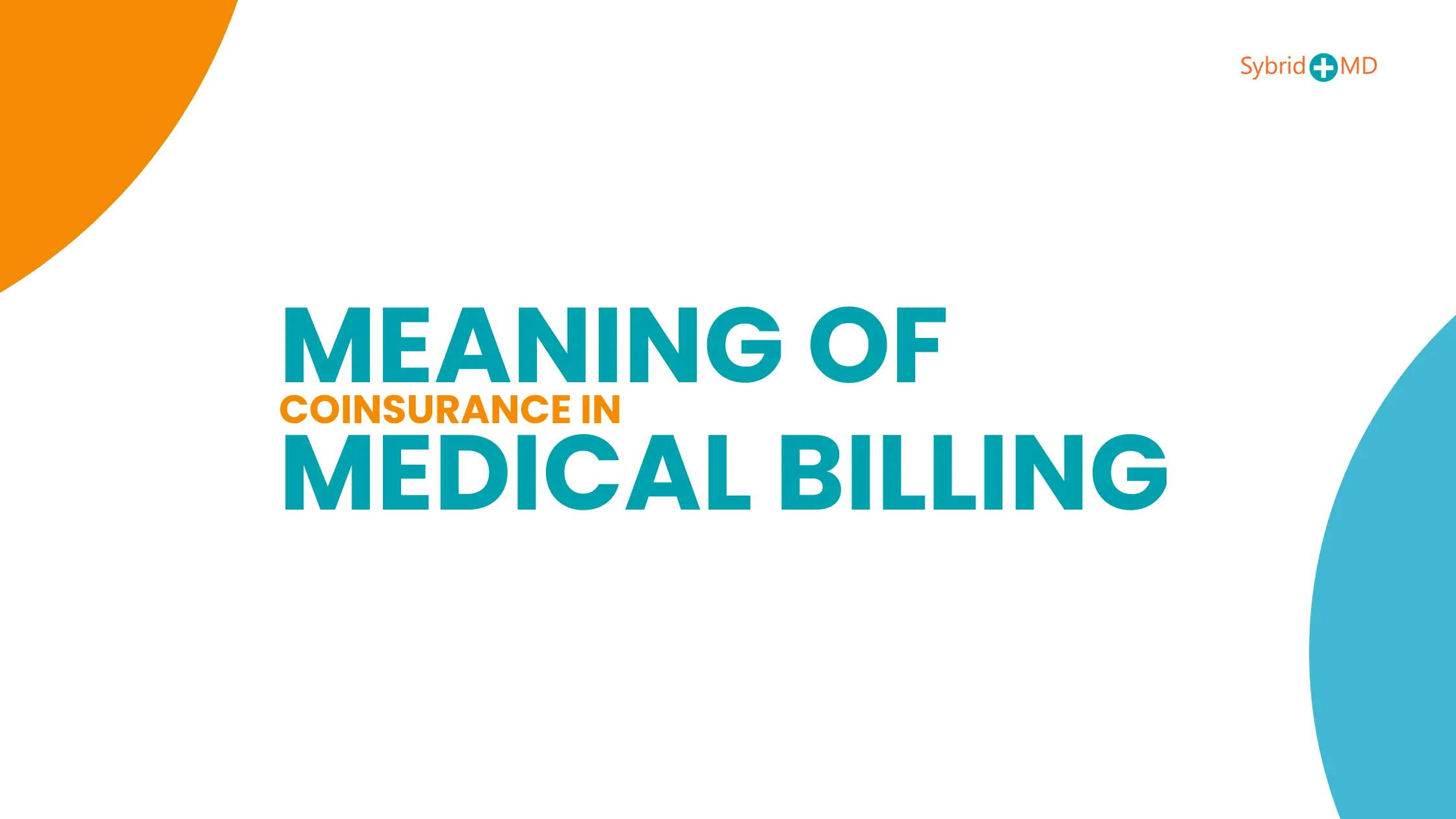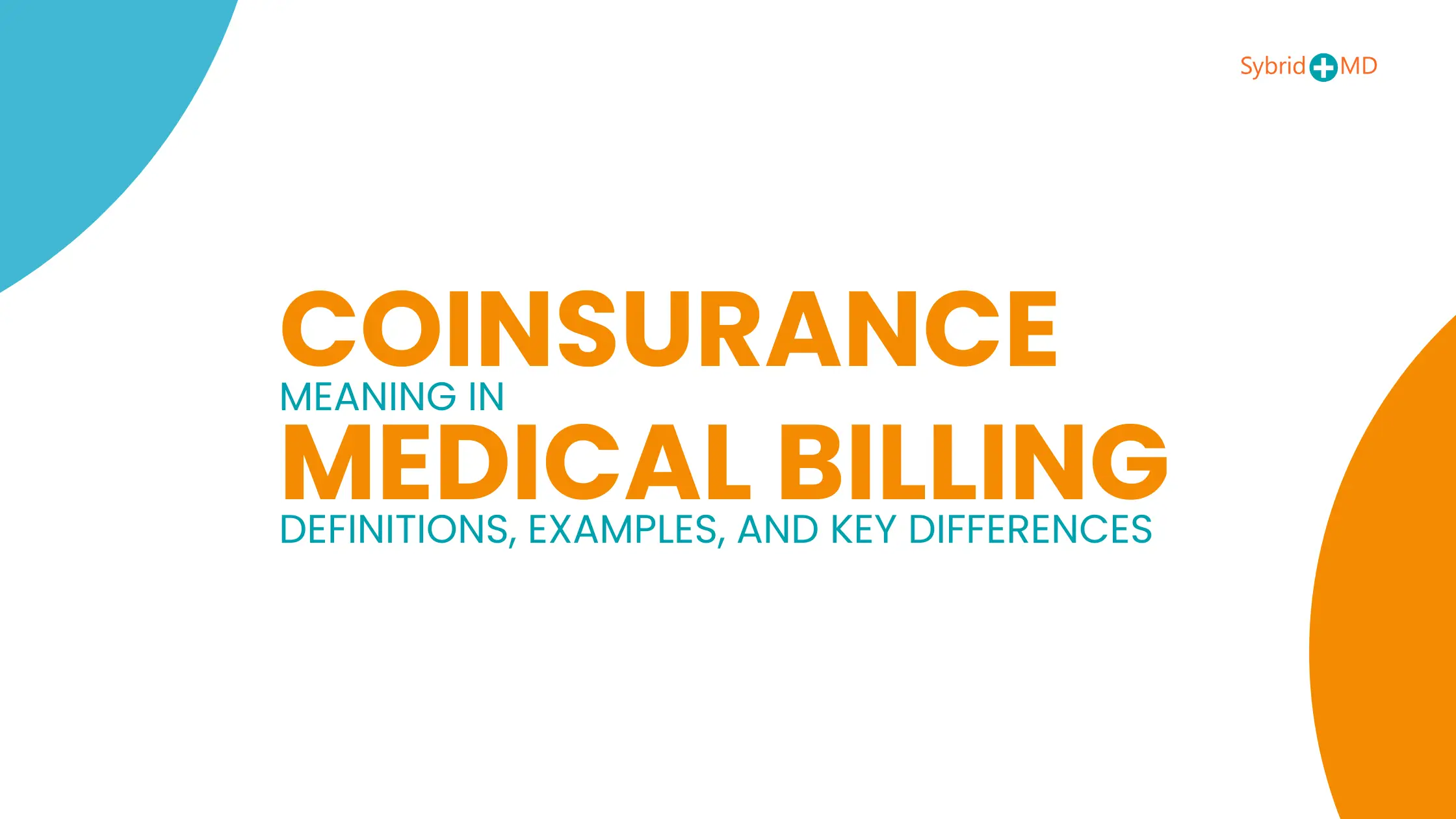Coinsurance is a portion of the cost of your care that you’ll pay after meeting your deductible. Coinsurance simply means you and your insurance carrier are each paying 100 percent of eligible costs divided by a percentage. Your coinsurance is the percentage that you pay the higher your coinsurance, the more you will pay for the visit. Coinsurance is one piece of a puzzle — and a puzzle that’s sometimes a mixed-up one, especially when you mix in other like terms like deductibles and copayments.
What does CO Stand for in Medical Billing?
Contractual Obligation (CO) is a group code which denotes the legal and financial obligation between a payer and a provider of a covered service(s) to ensure reconciliation of funds expended vs funds received on behalf of the patient. This is between the provider and the insurance (the provider is responsible for the CO amount, not patient). When an insurance company is legitimately contracting for services with a health care provider, CO is appropriate. A CO, for example, if the provider bills the insurer at a higher price than the maximum agreed upon. It generates a CO that the provider will presumably write off and not bill to the patient.
Coinsurance Meaning in Medical Billing Example
Suppose your health insurance plan includes these provisions:
- Annual deductible: $1,000
- Coinsurance: 80/20
- Deductible: $2,500· Co-insurance: 20%· Out-of-pocket maximum: $5,000
Type of expense: If you have a $3,000 medical bill, you must satisfy the $1,000 deductible before getting anything covered. This is a liability that belongs entirely to you.
Coinsurance: After the deductible has been paid, the remaining $2,000 would be split according to the coinsurance agreement.
Insurance Covers:
- 80% out of 2,000 = 1,600
- You get: 20% $2,000 * 20% = $400
- Your total cost for this medical service would be: $1,400 ($1,000 deductible + $400 copayment)
Benefits and Limits
Coinsurance assigns shared responsibility but limits patient spending to the out-of-pocket maximum. Once you’ve paid a total of $5,000 (the deductible, plus coinsurance and copayments), the insurer covers 100% of covered medical expenses for the rest of the policy period.
Coinsurance is the basic insurance concept. Patients can have an idea of their out of pocket cost and be upfront with what the biller is charging so they are not having unexpected episodes of medical cost.
Meaning of Coinsurance in Medical Billing

In medical billing, coinsurance is the percentage of charges for medical services that a patient is responsible for paying after the deductible has been paid under the patient’s health insurance plan. But it is very much part of what these patients are in — in fact, part of a cost-sharing arrangement that the patients didn’t set up with the insurance company, but is a way to split the cost of drug treatment in their own patient population. Coinsurance is different from a copayment, which is a fixed-dollar amount you pay for some services. Coinsurance: A percentage of the total service cost
For instance, 80/20 means your insurer covers 80% of your covered medical expenses and you cover the remaining 20%. Suppose that you have already satisfied your deductible, and you receive a $1,000 medical service. In this example, your insurer would pay $800 (80%) of this bill, while you would owe a $200 (20%) coinsurance payment.
Coinsurance applies only when you are receiving services that are covered under your insurance plan, and stops when you hit your out-of-pocket maximum. The maximum is the most you can pay in a policy year, including the deductible, coinsurance and copayments. After that, you generally pay 100% of all covered medical costs for the remainder of the calendar year.
Coinsurance is a powerful incentive for the wise consumption of medical services because the consumer has a direct financial incentive to decrease consumption of his or her care. But it can also result in costly out-of-pocket expenses for consumers, especially for costly procedures or treatments. For patients, coinsurance at least serves to acclimate your health care finances to prevent surprise bills. Patients can keep their health care spending in check by getting to know their insurance plan’s deductible, coinsurance rate and out-of-pocket maximum.
What is an Example of a Coinsurance?
Suppose you buy a health insurance policy with an 80/20 coinsurance clause, a $1,000 out-of-pocket deductible and a $5,000 out-of-pocket maximum. Unfortunately, yo early outpatient surgery year how much: 5,500. But because it’s in-network surgery and because you haven’t met your deductible, you owe the first $1,000 of the bill. After the first $1,000 deductible, you would be liable for just 20 percent of the remaining $4,500 of the bill, or $900.
And your insurance company will pay 80 percent, of what’s left. For instance, if you’ve met your annual deductible, and require another expensive procedure late in the year, your coinsurance provision kicks in immediately. And since you already paid $1,900 of your own money in medical expenses in the policy year, your medical expenses for the rest of the year will cost you no more than $3,100. Monthly premiums and out-of-network expenses do not apply to the out-of-pocket cap.
Once you reach your $5,000 out-of-pocket maximum, your insurance company covers 100% of for you of any in-network covered services you use for the rest of the year.
What is difference between Copay and Coinsurance?
The Main Difference Copay and coinsurance refer to how patients share healthcare costs with their insurance providers. Both are cost-sharing mechanisms, but they work in different ways.
1. Copay
Copay, also referred to as a copayment, is the amount the patient has to pay out-of-pocket for a specific healthcare service or prescription. Copays are generally grouped by categories or services: primary care visits, specialist visits, emergency room visits or prescription drugs.
Patients typically owe copays at the time they use a service. So if you have a plan with a $30 copay for a visit to a primary care doctor, you will pay that amount directly to the health care provider, regardless of whether the actual service cost $100 or $300.
Copays are helpful because they are set amounts in an insurance plan, so they are easy to predict and clear for budgeting. They are most often used for routine or preventive care services, and they apply to most instances from day one of the policy year, before the deductible is met. You may also read this blog to know more about Copay in Healthcare Insurance.
2. Coinsurance
Coinsurance is a percentage of a healthcare service cost the patient pays after their deductible has been met. The other percentage is paid for by the insurance company. Meanwhile, unlike copays, which are fixed amounts, a coinsurance amount will vary depending on the total cost of the service provided.
For instance, in case, let’s say that your insurance plan has an 80/20 coinsurance split, your insurance will cover 80 percent of the invoice while the rest of the charge will be your responsibility to pay. In other words, a service that would cost $1,000 would result in you paying $200 (20%) and your insurance
$800 (80%), as a result, you should be prepared to settle your deductible Coinsurance tends to apply to big-ticket items, like surgeries, hospitalizations or specialty care, and continues until you reach your out-of-pocket maximum. From then on, the insurance company typically covers all costs of eligible services for the rest of the policy year.
Key Differences
Predictable:
A copay is a fixed cost, so it’s more straightforward to budget for; only coinsurance is expressed as a percentage and can vary depending on what the final cost of the service ends up being.
Timing:
Most copays apply immediately, before you reach your deductible. Coinsurance is a level of cost-sharing that is only applied after the deductible has been met.
How It Works:
Copays are set fees; coinsurance is a percentage.
What is the difference between a Deductible and a CO Pay?
So, the difference between a deductible and a copay is how these two function in health plans to establish the cost-sharing with the patient.
1. Deductible
A deductible is a specific amount of money that the patient has to take out of the pocket and pay for the services covered by the health insurance. It is an annual limit which means every year, patients should go over this value. Also they may need to pay the whole cost of most services (the ones not covered by a plan that exclude from the deductible like preventive care or under some plans
Example of Deductible
- Your deductible is $1,000.
- You go to a specialist, receive a $500 bill. You have not yet reached your deductible, so you pay the full bill of $500.
- Once you pay that $1,000 deductible, your insurer will start to cover some of your costs, perhaps with coinsurance or copays.
- High-deductible plans usually come with lower premiums, but there is more at stake in terms of what the patient pays up front.
2. Copay
A copay, or copayment, is a set dollar fee that a patient pays for some health care services, including doctor visits, prescriptions or emergency room visits. Copays are established by your insurance plan and often need to be paid immediately. A copay, unlike a deductible, means that patients will not be responsible for paying the full price for the entire service; it is a smaller portion of the overall cost.
Example of Copay
- The $20 copay is in your plan for a visit to a primary care doctor.
- You would pay the $150 for a visit and your insurance would pick up the rest of it. Copays can be applied up front, even before you have met the deductible, for some small things, such as routine visits to the doctor or a prescription.
Key Differences
- A deductible is for overall spending and is an up-front cost you must meet in order to gain the coverage of your insurance, while a copay is in reference to specific services.
- Variable (to the cap) deductibles; fixed dollar micpays.
- Copays can happen at any point; deductibles are over a year.
Conclusion
In conclusion, what you need to understand coinsurance, copays, and deductibles for is that understanding how they differ from one another along with examples of each may help you tackle medical bills with more confidence, manage your finances better, and avoid surprise bills. For healthcare providers or therapists, navigating insurance complexities isn’t limited to patient terms alone.
Ensuring you are properly credentialed with insurance companies is key to streamlining reimbursements and building trust with patients. Read our blog on how insurance credentialing benefits therapists to learn more. Additionally, if you’re looking to get started with the credentialing process, check out our guide on credentialing providers with insurance companies for detailed steps.

